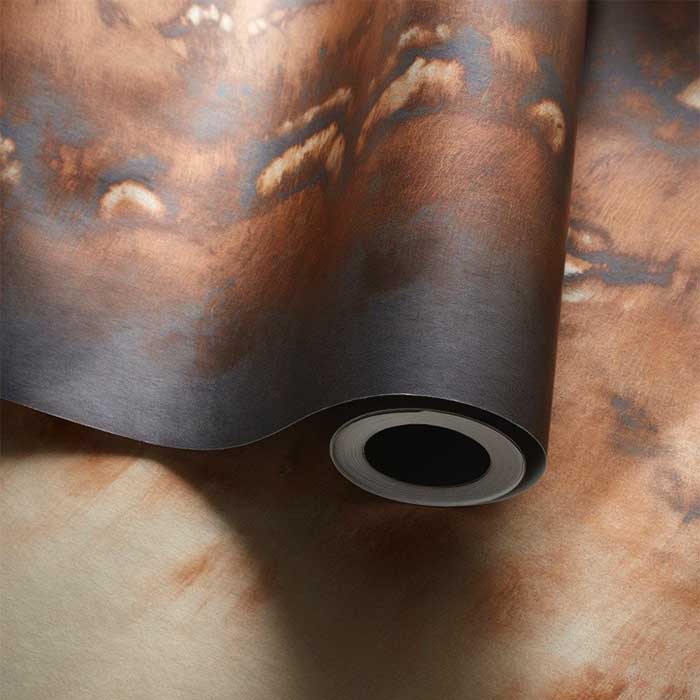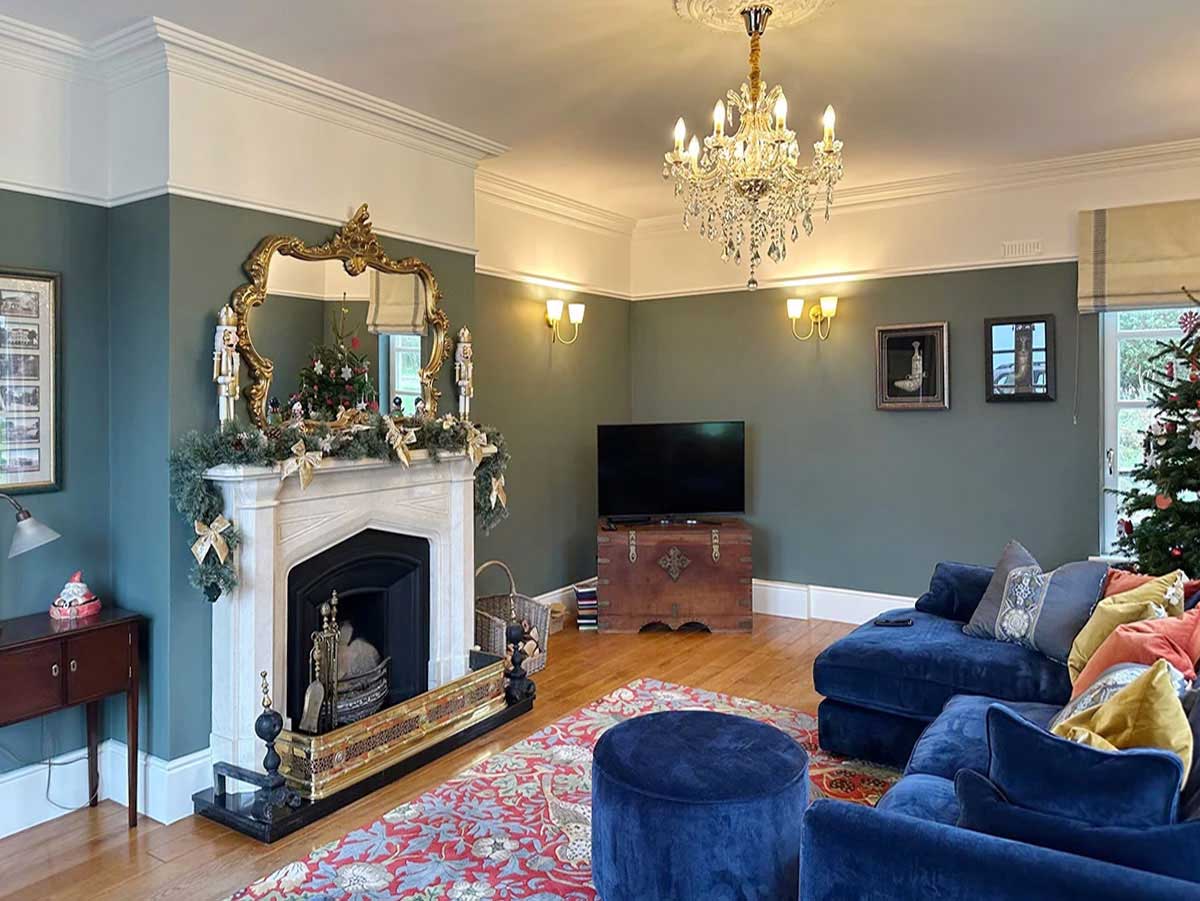Accessorising your rooms is an easy and effective way to give them warmth and character, especially if you are brave and allow your accessories to express who you are. Not only will doing so make your rooms places where you really want to be, it will also make it easier for you to decide what goes in and what is thrown out.
In this article, we’re going to give you 12 tips to help you accessorise your rooms effectively and efficiently, so they sparkle with your character.
Wallpaper

Wallpaper is often overlooked. Many people feel it’s a bit old fashioned. But it isn’t. Some designs are old fashioned, but wallpaper itself is an enduring classic. And it’s not hard to understand why. It’s flexible, works anywhere and there are almost endless designs to choose from, so you’re virtually guaranteed to find something you love.
What makes wallpaper so flexible is that it can be replaced relatively easily—in some cases extremely easily. You can either strip off old wallpaper and put up new designs on the bare walls. Or, in some cases, you can put up new paper over existing wallpaper. That depends on the condition of the older paper and the kind of wallpaper it is. Coated wallpapers will need to be removed first.
Wallpaper also works exceptionally well in small spaces or on a single wall in an otherwise painted room.
Here are three tips for using wallpaper in your rooms:
1. Use wallpaper to hide imperfections. This is especially useful in older houses, where walls may not be as pristine as they once were. Don’t expect miracles. If there are big chunks missing from your plaster or big cracks in it, it’s best to get those filled before putting up wallpaper. And wallpaper won’t hide large protruding lumps. But it’s a terrific solution if you want to hide small imperfections and thin cracks.
2. Paint over embossed wallpaper for a special effect. Many wallpapers have an embossed pattern. That’s when you can feel the raised parts of the pattern as you run your hand over the wallpaper. (Debossed is when the pattern sinks down into the paper, rather than rises up from it.) Painting over embossed wallpaper can give a magical effect—a combination of a regular painted wall and the pattern of the paper. It’s especially wondrous when light dances across the painted paper and the patterns are revealed by their shadows.
3. Although wallpapers range from the very cheap to the super-expensive, it can be very cost effective—especially if you only need to cover a small area. If that’s the case, you may find that the free sample of a high-quality wallpaper you get from the shop will actually do the job.
Lamps
Lamps are two accessories rolled into one. First, they can be beautiful objects in their own right. For example, Tiffany lamps and Tiffany-style lamps can be breathtaking to look at, even when they aren’t switched on. (Obviously, they are completely magical when they are.) And many other lamps have elegant lines and shapes, making them attractive pieces in a room.
Then there is the effect they have on a room. Their ‘second accessory’, if you like. The shape and colour of the light they project can sculpt a part of a room or a wall by contrasting the lit part with the darker, unlit part. The light they throw determines the visual feel of the room.

Here are two tips to help you accessorise your rooms with lights and lighting.
1. There are three types of lighting and lights to consider. There are main lights, which bathe a room in an even, all-illuminating light. These lights should really only be switched on when you are cleaning and need to get a good overview of a room.
Next, there are lights for atmosphere and mood. These are lights that give the room character, like standing lamps and table lamps.
Finally, there are highlight lights. These bring lighting detail or emphasise a particular area or object in the room. In the bedroom, a highlight lamp can also work as a reading light.
2. Lamps are versatile and long lasting. You can change the lampshade on many lights, giving them a refresh. That’s why we always encourage clients to go with lamps that have bases they love. The base is permanent, but the shades are easily replaced. You can even have lampshades to suit a particular time of the year—swapping them out as the seasons progress.
Cushions
You can never have enough cushions, in our opinion, so don’t be shy. They add colour, character and texture to a room. Plain is safe. Greys and blues work wonderfully in coastal cottages, for instance. But if you’re adventurous, you can combine patterns and textures all on the same chair, sofa or bed, making them a visual feast.
These are our three top cushion tips:
1. Go for a quality inner that can be cleaned. Cushion covers are easily replaced, giving the cushion inner a new lease of life. Also, changing the cover can give both the cushion and the room it’s in a visual refresh.
2. Personalise your cushions. At a very basic level, pick colours and patterns you love. But why not go all in and get cushion covers printed with pictures of significant places, people and pets in your life? We know of an instance in which a bed-bound, elderly widower was being treated in hospital and the nursing staff had his wife’s face put on a cushion, so he could always have her face next to him in bed during his treatment. Isn’t that beautiful?
3. While you can never have enough cushions, you can’t always keep them on the sofa or bed. You need room for the most important thing, after all: you. So have a basket dedicated to cushion storage next to your sofa or bed. That way, you can simply toss off the cushions you don’t want, but have them nicely stored away, rather than lying on the floor for the dog to chew on.

Rugs
Rugs bring so much to a room. They can be used in carpeted spaces as well as spaces with wooden or tiled floors. where they not only add a splash of colour, but can act as sound dampening too. (If you live in a flat, your downstairs neighbours will love your rugs, even if they never actually see them.)
We’ve got four solid rug tips for you. You could say we’ve got you covered:
1. A rug is a great addition to a child’s room. It’s a soft surface for them to play on. Even carpeted floors can be quite hard to sit on for long periods of time. A thick rug is a great solution.
2. Put two or three rugs together to cover a space. Combining rugs not only adds visual flair to a room, it is a terrific way of covering a bigger floor. You might worry that the rugs won’t match, but in our experience, more often than not, rugs just go together. Consider combining brightly coloured rugs with more neutral patterned ones.
3. Don’t scrimp on size. Go big, rather than small. Small rugs can be a slip hazard on wooden and tiled floors, because they aren’t heavy enough to hug the floor underneath. Small rugs work well when placed under a coffee table, which anchors them better. Or you can overlay several smaller rugs on top of each other to make them heavier and more stable on the floor.
4. When it comes to stability underfoot, the thicker the rug, the better. This is especially true in hallways, where light floor runners can be treacherous.

Rugs can be an investment. Believe it or not, rugs can be collectors’ items that can appreciate in value considerably over time. You need to know what you’re doing, though, so it’s best to consult with an expert if vintage or collectable rugs appeal to you.
When buying high-quality rugs, it’s worth bearing in mind that rugs don’t necessarily have to go on the floor—if that puts you off getting one. They can also be hung on walls, making them extra flexible.
So there you have it, four types of accessories that can bring life, vigour and character to your rooms, sometimes at minimal cost. Not only that, accessories are fun to shop for and try out. They’re easily replaced (cushions, lamps and rugs particularly), so they offer you the opportunity to experiment and really express your character.
A quick plug, if that’s OK? We offer a finishing touches styling service to help you add those little flourishes to your rooms that will really elevate them. Have a peek here to find out more: Celene Collins Finishing Touches.




